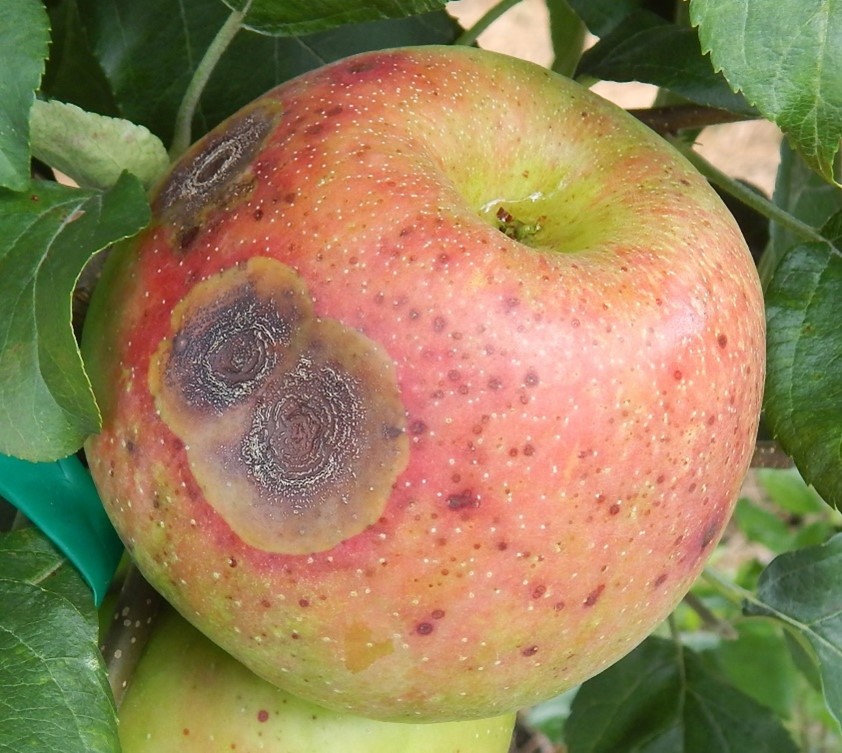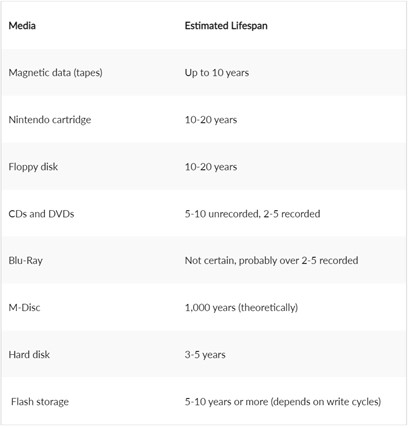The Digital Dark Age is what some are calling the potential (or in some cases realized) threat of the loss of information stored digitally. Bit rot, digital decay, and link rot are all common phenomenon that plague arts organizations today and will likely continue to burden arts organizations for the foreseeable future. However, despite the prevalence of these issues, the average technology user may not have ever heard these terms used let alone defined. This article will help clarify what exactly bit rot, data decay, and link rot is, how it affects our arts organizations, and how to protect against it.
What is bit rot/data decay/link rot?
All these phenomena can be pared down to the corruption or degradation of digital information. While digital information may seem permanent or eternal, like organic material, digital information does degrade overtime which is why this phenomenon is likened to “rot” or “decay”.

Bit rot, also known as data decay, occurs in many forms. For every version of digital storage that has been invented, there is an accompanying form of bit rot/data decay. In its most basic form, all digital information is written and stored as individual data bits that are either ones or zeros. These clusters of ones and zeros create the digital information we see and interact with. Even the words and images you are currently looking at on your screen can be simplified down to ones and zeros. Over time, these bits can inexplicably “flip” – meaning the ones become zeros or the zeros become one. When this occurs, it corrupts the information. This form of data decay can occur on hard drives which means this happens most often to the files, word documents, images, etc. you save on your desktop in any and all forms (jpg, .doc, pdfs).
In solid state hard drives, another common vehicle for digital storage, data saved in charged electrons stored in microscopic transistors. Overtime, these charged electrons will escape from the solid-state drive. As the charged electrons leak out of the solid-state hard drive, the information stored in them also escapes leading to corrupt or missing data.
Data decay also takes place in older digital storage vehicles. Floppy disks, magnetic tape storage, CDs, and DVDs are all susceptible to bit rot and data decay. The plastic and metals that comprise these digital storage devices break down over time. Exposure to light, heat, and moisture can speed up this process. As the plastic and metals break down, the data stored on them changes and becomes corrupt or disappears altogether.
Another common and form of data decay occurs when hardware and software no longer exist to support the storage vehicle in question. To stay relevant, tech companies are always updating hardware and software. However, this means that eventually hardware and software can quickly become “irrelevant” and unsupported. What was once the pinnacle of safe and secure data storage can quickly become an impenetrable prison for your data.

A related issue to data decay/bit rot is link rot. Link rot occurs when information indicated to exist at a specific location on the internet, for myriad reasons, does not exist. This could be due to a server failure which could corrupt or lose information at a linked location. However, a more common cause is that he information at the linked location is no longer being maintained and has become outdated.
“We may [one day] know less about the early 21st century than we do about the early 20th century,” says Rick West, who manages data at Google. “The early 20th century is still largely based on things like paper and film formats that are still accessible to a large extent; whereas, much of what we’re doing now — the things we’re putting into the cloud, our digital content — is born digital. It’s not something that we translated from an analog container into a digital container, but, in fact, it is born, and now increasingly dies, as digital content, without any kind of analog counterpart.”
How data decay is affecting non-profit arts organizations.
The arts world is especially susceptible to the risk of falling into a “Digital Dark Age”. While many arts organizations recognize the importance of digital tools, they may not have the time, money or staff with required skills and knowledge to stay on top of the latest trends in technology and specifically data storage. Scripts, production and rehearsal notes, design plans, photographs, audio and visual recordings of productions and rehearsals, copies of programs and many other digital artifacts are currently preserved by arts organizations around the world.
Organizations save these digital artifacts for many reasons. An organization may save these artifacts digitally regardless of the artifact’s origins. Some artifacts may be “born digital” defined by Yale University as “materials that are created in a digital format. This includes websites, email, digital photographs, electronic records, and more. Born-digital items are distinct from analog items that are subsequently digitized, such as paper manuscripts or photographs.” Some artifacts, like the paper manuscripts or photographs just mentioned, are digitized and stored because digital archives often take up less space than their analog counterparts. Additionally, organizations may believe the artifacts are “safer” or will be better preserved in whatever digital format they chose compared to their original analog state.
These digital artifacts are most likely stored in or on whatever digital storage vehicle was cheapest and most popular at the time of the archiving process. It is not uncommon for organizations to have things stored on floppy disks from the 80s, CDs from the 90s, DVDs from the early aughts and flash drives and other external hard drives after that. Unfortunately, each of these storage vehicles has relatively short shelf life, especially if they are being stored in sub-optimal conditions discussed above.

As seen on the chart from Storage Craft, many digital storage vehicles, like the CD and DVD which were commonly used less than 20 years ago, are long past their recommended lifespan. If arts organizations have not already updated their digital archives due to a lack of knowledge of the issue, or lack of time, money and/or expertise it may be too late.
Organizations save these artifacts to serve as a reference for remounts or future productions that may be inspired or build upon a concept or process used in a previous work. Organizations may also use digital records and artifacts to communicate their work to the outside world via advertisements, their website, grant reports, and other external facing documents. Organizations also save these artifacts as a record of local history for their communities and as a record of human creativity. Beyond the short-term issues of organizations losing useful data for their daily operations, we risk losing important records that can help bring nuance and deeper understanding to moments in time, to our communities, our craft, and ourselves.
How arts organizations are addressing these issues.
The first step for many organizations in battling data decay is simply being aware of it. Unfortunately, there is no perfect solution that can be applied to all organizations and situations. However, there are some best practices and considerations all organizations can make, although their specific circumstances may change what the end result is on a case by case basis.
First, an organization should take thorough and honest survey of all digital (and non digital) archives. This can be a daunting task, especially if it hasn’t been done in a while. Knowing what you currently have stored and on what storage devices are a key first step. The organization should also check and confirm that the data and artifacts are still accessible both by confirming they have working hardware and software to access the information, and .that none of the information is corrupt.
The next step is to update and transfer data on old or unreliable storage systems. There are third party companies who can help transfer data from older tech for a small fee if your organization no longer has the hardware or software to do so (assuming the data is not corrupt and lost). Solid-state external hard drives are currently the most common way large amounts of data is saved. The highest end solid-state hard drives can now run diagnostic tests and even correct some levels of corruption in its files when detected. While this may be the most accessible way to currently save large amounts of data, tech experts suggest you fully replace solid state hard drives every ten years.
Additionally, on-site digital archives can be backed up in the cloud. Third party servers can store large amounts of data for a small fee. However, this technology is susceptible to the same risks that an organizations on-site digital archives face. There can also be additional concerns of data privacy and security when utilizing a third-party server for cloud based digital archives.
Once a digital archiving plan has been created, it is best to record best practices for your organization so processes don’t get lost or confused when there is staff turnover. An organizations plan may utilize outside IT consultants and/or vendors to survey, update, and maintain their digital archives.
Each organizations digital archiving plan will look slightly different based on the amount and kind of data they plan on storing, how often they plan on accessing that data, and how much money and IT expertise they are able to commit to this process. Regardless of the tools and processes organizations use, it is vital that our arts institutions are properly preserving records of the art created by, for and about their communities.
References
American Scientist. “Avoiding a Digital Dark Age,” February 6, 2017. https://www.americanscientist.org/article/avoiding-a-digital-dark-age.
“Bitter Rot of Apple.” In Wikipedia, April 4, 2022. https://en.wikipedia.org/w/index.php?title=Bitter_rot_of_apple&oldid=1081011408.
Desire Athow. “Best Cloud Storage of 2022.” TechRadar, April 11, 2022. https://www.techradar.com/news/the-best-cloud-storage.
Fino-Radin, Ben. “Digital Art Storage.” Medium (blog), February 16, 2018. https://medium.com/@benfinoradin/digital-art-storage-e10a7b0e0d89.
“How to Solve 404 Error.” Accessed May 2, 2022. https://help.rockcontent.com/en/how-to-solve-404-error.
MiniTool. “Complete Guide to Bit Rot [Definition, Detection, Fixes],” March 27, 2020. https://www.partitionwizard.com/clone-disk/bit-rot.html.
ProStorage. “Bit Rot: What It Is and How To Stop It From Destroying Your Data,” May 22, 2018. https://getprostorage.com/blog/bit-rot-stop-destroying-your-data/.
Stiemer, Friedrich. “Bit Rot: How to Avoid the Slow Death of Hard Drives and SSDs.” Tech Advisor. Accessed April 22, 2022. https://www.techadvisor.com/how-to/storage/bit-rot-slow-death-of-hard-drives-ssds-3796137/.
StorageCraft Technology, LLC. “Data Storage Lifespans: How Long Will Media Really Last? – StorageCraft,” August 28, 2013. https://blog.storagecraft.com/data-storage-lifespan/.
The World from PRX. “Scientists Warn We May Be Creating a ‘Digital Dark Age.’” Accessed May 5, 2022. https://theworld.org/stories/2018-01-01/scientists-warn-we-may-be-creating-digital-dark-age.
“The History of Computer Data Storage, in Pictures – Pingdom.” Accessed May 5, 2022. https://www.pingdom.com/blog/the-history-of-computer-data-storage-in-pictures/.
Thomson, Kristin, Kristen Purcell, and Lee Rainie. “Arts Organizations and Digital Technologies.” Pew Research Center: Internet, Science & Tech (blog), January 4, 2013. https://www.pewresearch.org/internet/2013/01/04/arts-organizations-and-digital-technologies/.
Król, Karol, and Dariusz Zdonek. “Peculiarity of the Bit Rot and Link Rot Phenomena.” Global Knowledge, Memory and Communication 69, no. 1/2 (January 1, 2019): 20–37. https://doi.org/10.1108/GKMC-06-2019-0067.
Weinstein, Lauren. “Inside Risks: Bit-Rot Roulette.” Communications of the ACM 42, no. 3 (March 1999): 144. https://doi.org/10.1145/295685.295727.
“What Does ‘Born Digital’ Mean? | Primary Sources at Yale.” Accessed May 5, 2022. https://primarysources.yale.edu/what-does-born-digital-mean.